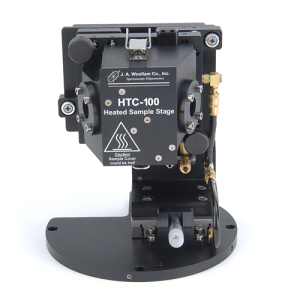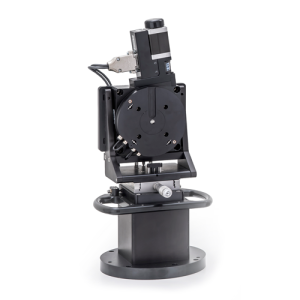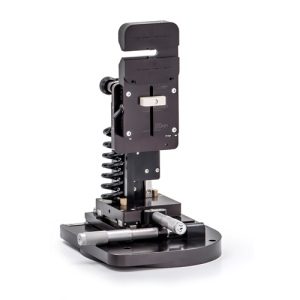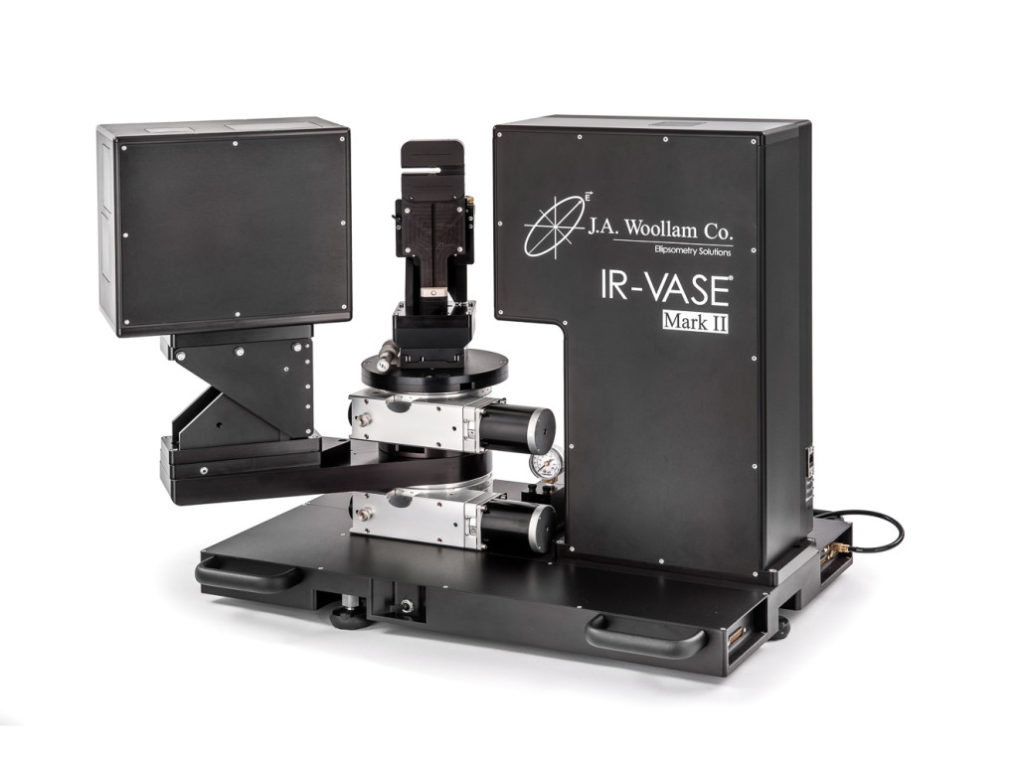
IR-VASE Mark II Ellipsometer
Why an IR-VASE Mark II? Because of benefits such as
Wide Spectral Range
Covers near to far infrared. 1.7 to 30 microns (333 to 5900 wavenumbers) Resolution from 1cm-1 to 64cm-1High Sensitivity to Ultra-thin Films
Spectroscopic ellipsometry data contain both “phase” and “amplitude” information from reflected or transmitted light. The phase information from IR ellipsometry offers higher sensitivity to ultrathin films than FTIR reflection/absorbance, while retaining the sensitivity to chemical composition.Non-destructive Characterization
The IR-VASE offers non-contact, non-destructive measurements of many different material properties. Measurements do not require vacuum, and can be used to study liquid/solid interfaces common in biology and chemistry applications.No Baseline or Reference Sample Required
Ellipsometry is a self-referencing technique that does not require reference samples to maintain accuracy. Samples smaller than the beam diameter can be measured because the entire beam does not need to be collected.Highly Accurate Measurement
Due to patented calibration and data acquisition procedures, provide accurate measurements of Ψ and Δ over the full range of the instrument. As such the IR-VASE can determine both n and k for materials over the entire spectral range from 1.7 to 30 microns without extrapolating data outside the measured range, as with a Kramers-Kronig analysis. Perfect for thin films or bulk materials including dielectrics, semiconductors, polymers, and metals.Product Category: Ellipsometry
Industry: Particle and surface science
Supplier: J A Woollam
Description
OPTICAL COATINGS
Characterize thickness and IR index of single and multilayer films. Bulk uncoated substrates. Infrared optical systems. AR, HR, single-layer and multilayer coatings. High-index and low-index.
MOLECULAR BOND VIBRATIONS
Like standard FTIR spectroscopy, IR ellipsometry relies on the information about molecular bond vibrations. Infrared absorption caused by these vibrations can be studied in bulk or thin film materials. IR ellipsometry offers increased sensitivity over FTIR spectroscopy. It also presents the advantage of obtaining both n and k rather than just absorbance values. Figures below show measured optical constants of a silicone thin film with vibrational absorptions labeled.
MULTILAYER CHARACTERIZATION
Multilayer films can be extensively studied using the wide spectral range and variable angle capability of the IR-VASE®. Multiple angles provide additional information by changing the light’s path length through each layer. The following results show sensitivity to 3 layers. Infrared optical contrast between similar materials allows measurement of each layer’s thickness.
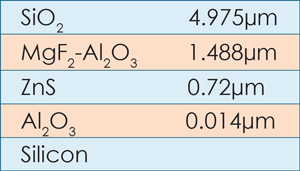
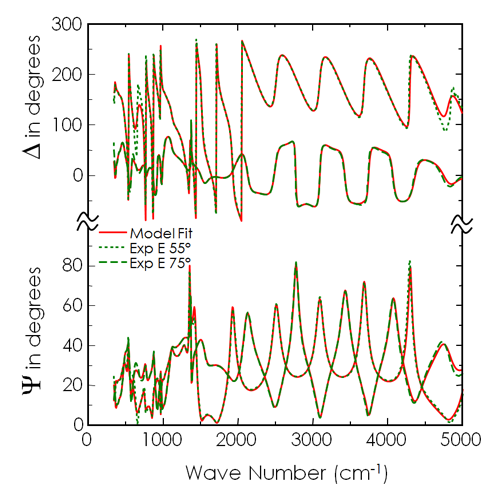
CHEMICAL COMPOSITION VIA MOLECULAR BOND VIBRATIONAL ABSORPTIONS
Like standard FTIR spectroscopy, IR ellipsometry contains information about molecular bond via vibrational absorptions. Infrared absorption caused by these vibrations can be studied in bulk or thin film materials. IR ellipsometry offers increased sensitivity over FTIR spectroscopy. It also obtains both n and k rather than just absorbance. Figures below show measured optical constants of a silicone thin film with vibrational absorptions labeled.
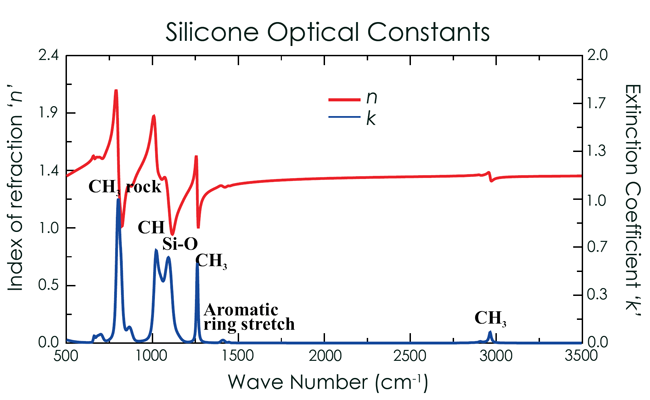
EPITAXIAL LAYERS, DOPING CONCENTRATION AND DOPING PROFILES
At infrared wavelengths, the difference in free-carrier levels can cause optical contrast between epitaxial or implanted layers. This gives IR-VASE® excellent sensitivity to epitaxial layer thickness and substrate doping concentration. The ellipsometer also has good sensitivity to carrier gradients at interfaces. Carrier profiles show near-perfect in agreement when nondestructive IR-VASE® and destructive SIMS measurements are compared.
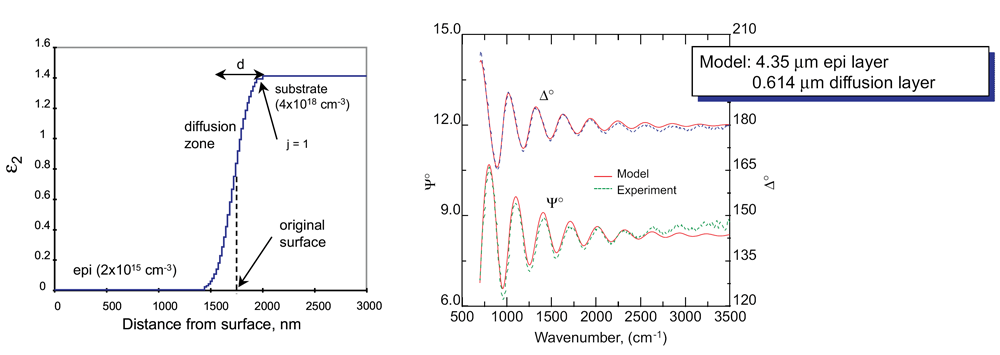
T.E. Tiwald et al., Phys. Rev. B, 60 (1999) 11 464.
PHONON STRUCTURE (COMPOUND SEMICONDUCTORS)
The Wide spectral range IR-VASE® is important for phonon absorption studies. Data on the left show phonon modes of a GaN / AlGaN laser structure, modeled to determine alloy ratios, doping concentrations, and film quality.
![]()
M. Schubert et al., SPIE Vol. 4449-8 (2001)
Specifications
Specifications
| Ellipsometer Configuration | RCE |
| Wavelength Range | 1.7μm to 30μm 333cm-1 to 5900cm-1 |
| Resolution | 1cm-1 to 64cm-1 (user defined) |
| Detector | DTGS |
| Angles of Incidence | 26° to 90° |
| Data Acquisition Rate (Complete Spectrum) |
1 to 30 minutes, typical (1 angle of incidence at 16cm-1 resolution) *Finer resolution will require longer time. |
| Max substrate thickness | 20mm |
Facility Requirements
Please contact J.A. Woollam Co. for complete list of facility requirements.
Dimensions
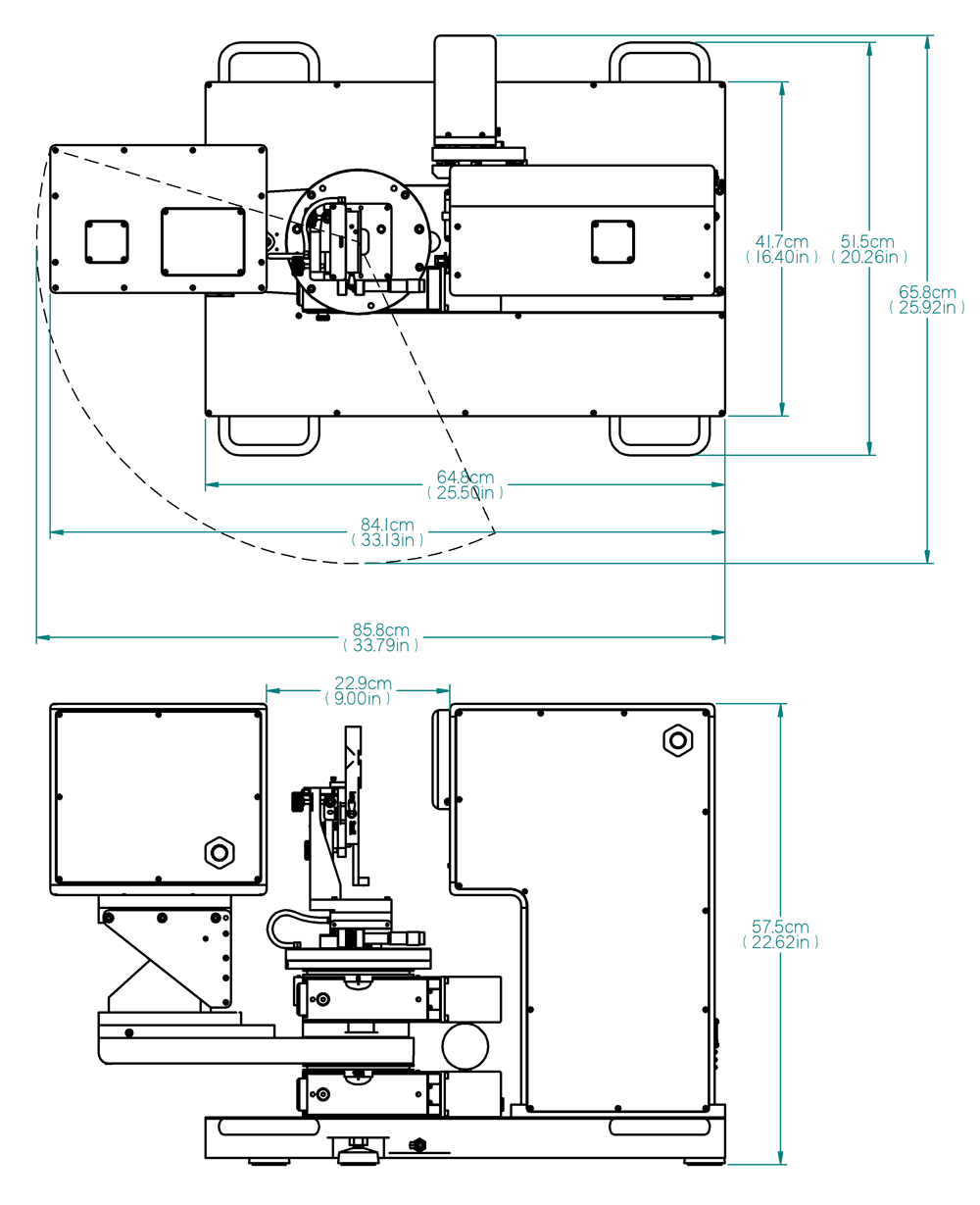
Brochures
Accessories
Cryostat |
|
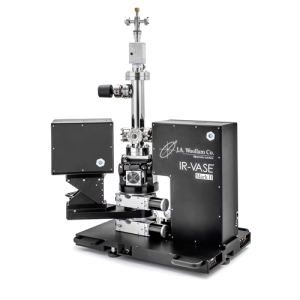 |
Temperature range: 4.2 to 500 Kelvin OR 4.2 to 800 KelvinAngle: 70°
Includes UHV chamber/cryostat, turbo pump,and temperature controller. Cryostat can be installed and removed, which allows the user to switch between the standard sample stage and the cryostat. |
Wide-Range Temperature Stage |
|
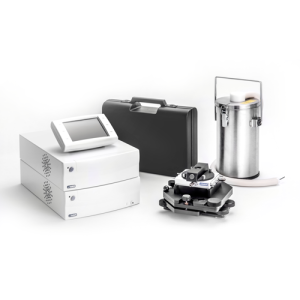 |
Temperature range: -70°C to 600°CAngle: 70°
Active Cooling with Liquid Nitrogen Sample area 22mm in diameter |
Standard Heat Stage (HTC-100) |
|
|
|
Temperature range: Room Temp to 300°CAngle: 70°
Passive Cooling Sample area up to 50mm diameter |
Rotation Stage |
|
|
|
Automated high precision sample rotation (360° Theta-only) stage.Useful when studying anisotropy. Through-hole behind sample allows transmitted beam measurements from normal incidence (0°) to ±19°.
Standard stage and rotation stage are swappable. |
Manual Sample Translation |
|
|
|
Translator Size: 50×50 mm XYStandard stage and Manual Sample Translation stage are swappable. |


